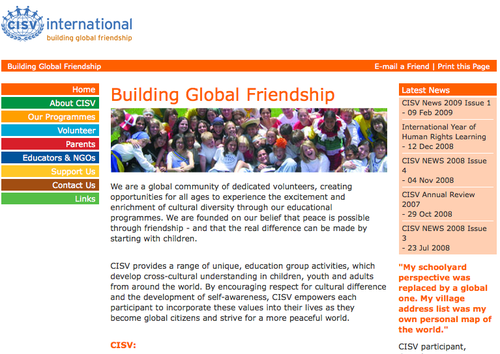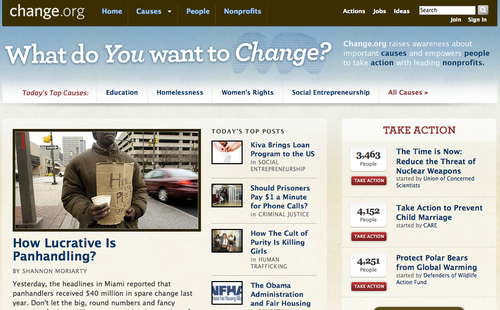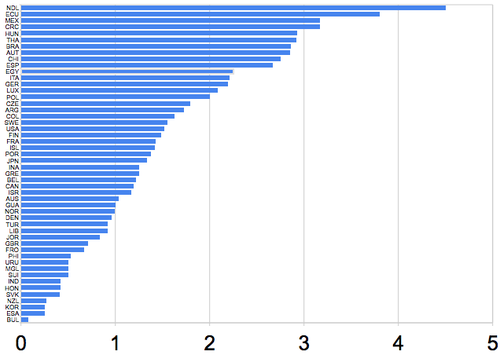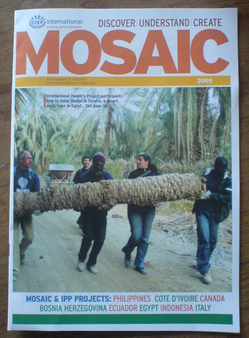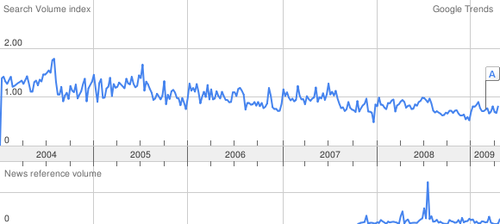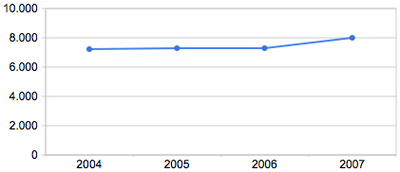At last years AIM there was a discussion in the German delegation on the importance of having a representation inside the Expanded Executive Committee = EEC- which consists of the IEC (INternational Executive Committee = the "bosses") and the chairs of international committees. At the moment Germany has nobody in the EEC. I remember back in 2000 we were 4 Germans during the EEC sessions.
To see how this changed over the years, I checked the numbers in the Annual Reports and created a graph to represent how many people from one country where in the EEC:

(The legend is exactly the other way around than the graph, don't be confused) It's interesting to see that the EEC has grown over the years, by adding new committees, but also the IJRs haven't always been part. Also quite remarkable is Norway's rise in recent years, with even two IEC members (Arne-Christian and Lene) today. On the other end is Great Britain that used to have two members for a long stretch, but hasn't had anybody in the EEC since 1999. Now, if you take all those years and count the "EEC-membership-person-years" (EECpy) and sort them by country you get another interesting picture:

(Unfortunately the software auto-selected different colors this time.)
Like with the IJR-elections it's Canada who turns up as number one, followed by USA, Sweden, Germany and Italy, 5 of our biggest NAs. But does the number of EEC-members stand in line with the size of the NA? Does the EEC representation reflect the size of the NA? To answer this question, I compared the EECpy with the total amount of participants sent to international programmes and expresse this with a ratio - a kind of quota, I'd like to call P/EEC (Participants/EEC member):

So here you can see, how many participants a country sends to international programmes to recruit on person to stay in the EEC for one year. The bigger the number, the less leadership compared to the NA size. Quite amazing to find Israel (119 participants per EEC year), Portugal (128 P/EEC) and Costa Rica (132 P/EEC) in the first places here.
But what to make out of all this?
To see how this changed over the years, I checked the numbers in the Annual Reports and created a graph to represent how many people from one country where in the EEC:
(The legend is exactly the other way around than the graph, don't be confused) It's interesting to see that the EEC has grown over the years, by adding new committees, but also the IJRs haven't always been part. Also quite remarkable is Norway's rise in recent years, with even two IEC members (Arne-Christian and Lene) today. On the other end is Great Britain that used to have two members for a long stretch, but hasn't had anybody in the EEC since 1999. Now, if you take all those years and count the "EEC-membership-person-years" (EECpy) and sort them by country you get another interesting picture:
(Unfortunately the software auto-selected different colors this time.)
Like with the IJR-elections it's Canada who turns up as number one, followed by USA, Sweden, Germany and Italy, 5 of our biggest NAs. But does the number of EEC-members stand in line with the size of the NA? Does the EEC representation reflect the size of the NA? To answer this question, I compared the EECpy with the total amount of participants sent to international programmes and expresse this with a ratio - a kind of quota, I'd like to call P/EEC (Participants/EEC member):
So here you can see, how many participants a country sends to international programmes to recruit on person to stay in the EEC for one year. The bigger the number, the less leadership compared to the NA size. Quite amazing to find Israel (119 participants per EEC year), Portugal (128 P/EEC) and Costa Rica (132 P/EEC) in the first places here.
But what to make out of all this?
- The NAs with the most people in the EEC are obviously investing in the international structure: It takes time and money to send somebody to AIM, until that person is qualified to take over a leadership position (when costs are covered by IO).
- NAs with members in the EEC probably also profit by a) gaining influence in the decision making process and b) getting first-hand information delivered back to their chapters. On the other hand you could argue, that these NAs are "wasting" human resources in the top structures instead of having them working on the grassroots level, i.e. on a chapter board. Often, when a committee chair's term is over, that person really needs a break from CISV, and is no use back in the chapter level.
- As usual, the numbers are a bit small to be significant. Take Israel: Without Iris (former SCC chair) and Richard (former ERC chair) Israel would be nowhere on this list. Two people can make a difference. Then again, with Noam as the new village chair, they have another leader lined up...wow. Loads of leaderhshis for a small NA.
